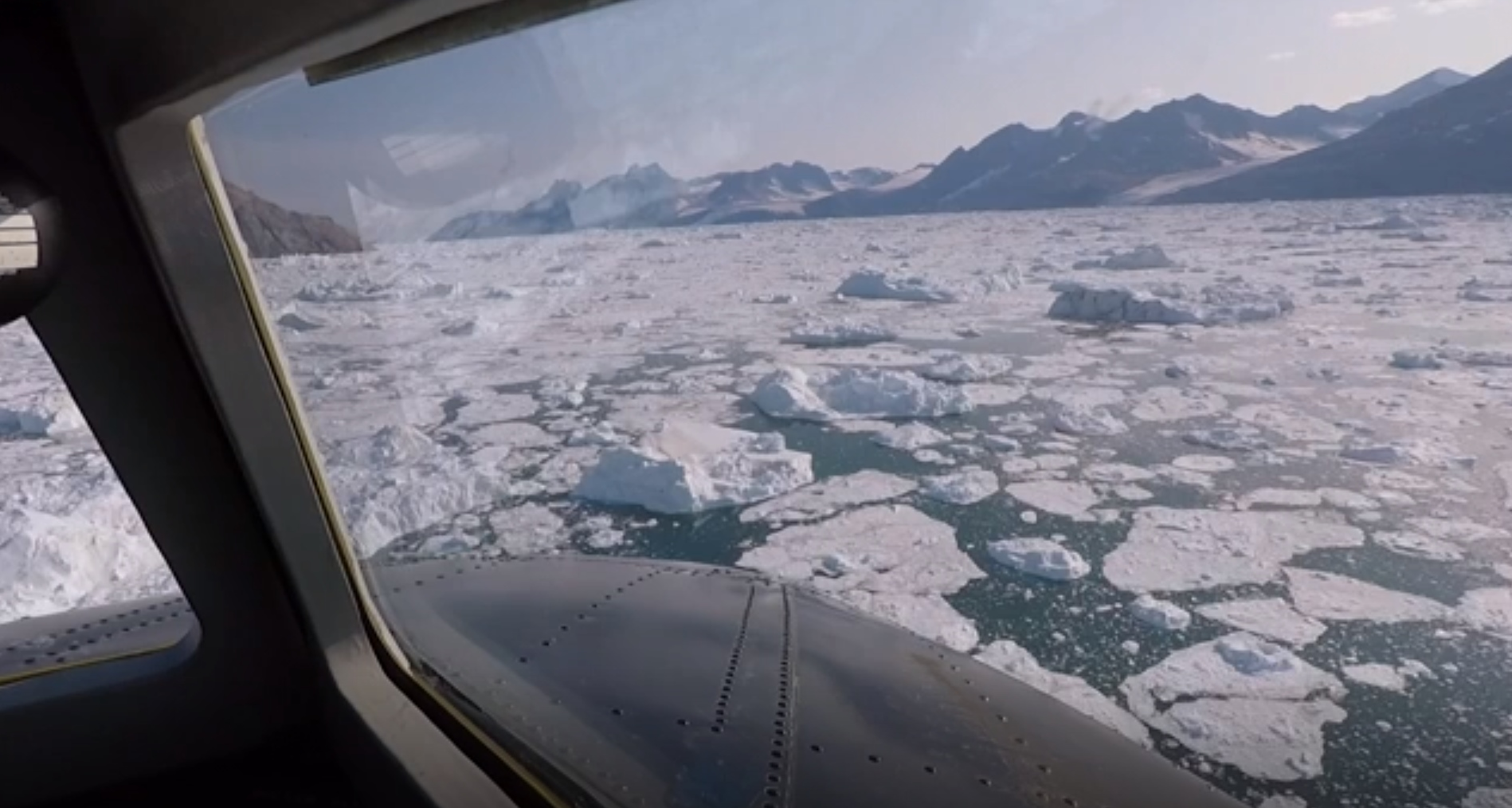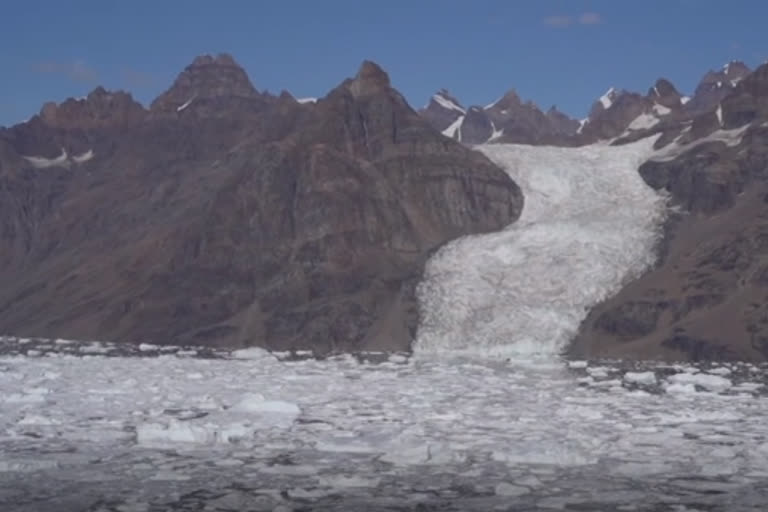Kangerlussuaq Glacier: A World War II plane stacked with science equipment is helping the National Aeronautics and Space Administration (NASA) to launch probes hundreds of metres under Greenland on a mission to track melting ice.
Greenland's ice sheet is melting six times faster than it was 20 years ago and this summer has experienced two of the biggest melts on record since 2012. The Arctic island is melting faster than ever before.
According to NASA, this month the ice sheet lost 11 billion tons of surface ice in one day, enough to fill more than four million Olympic-sized swimming pools.
It's down to global warming but NASA scientists are trying to get to the bottom of exactly what's causing it.
The lead scientist on the project, Josh Willis and his team have commissioned an old DC-3 warplane for this week's mission.
In a typical glacier, a layer of warm, salty water sits below a colder, fresher layer on the surface.
It's this warmer, saltier water that reaches into the fjords, melting the edges of the glaciers.
A fjord is formed when a glacier retreats, after carving its typical U-shaped valley, and the sea fills the resulting valley floor.
Warmer air above the surface is also eating away at the glaciers.
Together the warm air above and the warm water below are causing Greenland to lose billions of tons of ice daily in the summer.

The mission includes dropping probes into the ice to figure out which is the bigger cause, warm air or warm water.
Willis said, "We have three different kinds of probes. Each one transmits on a slightly different frequency. That allows us to listen to up to 3 probes at a time."
Each year the OMG team drops around 250 probes deep into the ice melt.
The probes measure temperature and salinity before radioing back data to the team.
This helps the scientists track how much warm water from the Atlantic is eating away at the glaciers from below as well as how the warm air is attacking them from above.
Willis said, "It has gone all the way down to 700 metres and it'll probably go to 8, it might even go to a thousand. A few of these fjords are that deep. But when it terminates you'll see a jump in the conductivity. That's because the little probe has hit some. Mud has gone into it. It will get way less conductive and that's one of the ways we know we've hit the bottom."
As part of OMG, annual surveys have also been measuring the height, thinning and retreat of the glaciers.
If at the end of the 5-year mission, the collated results show that water is playing a bigger role than the scientists currently think, it could mean that seas will rise faster than predicted.
Willis added, "We often think of Greenland's ice is like an ice cube with a hair drier. The air is warming up and that's melting the ice, but in fact, the oceans are doing a lot of the work too. And that means there is a lot bigger potential for Greenland to melt quickly than we anticipated before. And that would spell bad news not just for the Arctic, but for populations all around the world."
A billion tons of ice lost in Greenland raises sea levels all across the world by a measurable amount.
This is happening today and the question is, how fast is this is going to happen in the future? If it happens at a rate then many feet of sea level would rise in the next 50 or 100 years.Then it's going to have a huge impact for cities all across the world.
The US, billions of people live near the sea and will be affected by this rise. In fact, they're already beginning to be affected today.
The team is currently in Kangerlussuaq and headed to Constable Point before moving on to Svalbard on Friday.
This year's survey is set to be completed by September. That leaves a final year before results are collated, although the team hopes to continue the research until 2021 if budgets allow.
NASA has allocated £30 million to the project. As NASA missions continue to explore space, it seems in Greenland Earth is revealing its secrets to NASA.



